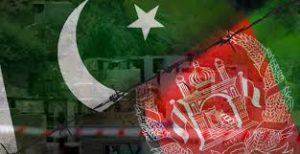Pakistan–Afghanistan Border Tensions 2025: Between History, Humanity, and Hope
The Durand Line has long been more than a border — it’s a line that separates not just two nations, but two intertwined histories. In 2025, the dust of that frontier once again rises, echoing with gunfire, politics, and human stories of displacement and endurance. As both Pakistan and Afghanistan grapple with renewed border tensions, the world watches with concern — and a glimmer of hope that dialogue may yet triumph over discord.
🔺 The Flashpoint: Why the Border is Heating Up Again
Recent months have seen a sharp rise in cross-border incidents along the Durand Line — the rugged 2,640-kilometre stretch that has historically been a symbol of both connection and conflict. Pakistani security officials claim that militant groups, particularly splinters of the TTP (Tehreek-e-Taliban Pakistan), have used Afghan soil to launch attacks. In response, Islamabad has reinforced its border posts and intensified surveillance operations.
On the Afghan side, officials in Kabul accuse Pakistan of heavy-handed tactics, including unannounced shelling in border villages that has displaced dozens of families. Afghan residents living near the frontier tell a different story — one of uncertainty, fear, and the struggle to live normal lives amid political storms.
🌍 Historical Roots: A Border Drawn in Sand
The origins of this conflict date back to the late 19th century, when the British demarcated the Durand Line in 1893. While Pakistan considers it an internationally recognized border inherited from British India, Afghanistan has never officially accepted it. This unresolved historical disagreement continues to shadow every diplomatic exchange between the two nations.
After the fall of Kabul in 2021 and the Taliban’s return to power, hopes initially rose for regional stability. However, differences over border recognition, cross-border attacks, and control over trade routes have since reignited deep mistrust. “It’s not just about territory,” one Kabul-based political analyst told Talk of Trend. “It’s about identity, sovereignty, and decades of broken promises.”
🧭 The Human Toll: Lives at the Line
While political leaders trade statements, it’s the borderland families who pay the highest price. Villages like Spin Boldak, Chaman, and Kurram Agency are once again witnessing the movement of displaced civilians seeking refuge from sporadic clashes. Markets that once thrived on daily trade are now eerily quiet. Truck drivers wait days for border clearance, and children in nearby schools recite lessons amid the hum of drones overhead.
According to humanitarian groups, over 15,000 people have been affected by the renewed tensions, facing shortages of food, medicine, and shelter. The UN and OIC have called for “immediate restraint and constructive dialogue.” Local NGOs warn that the humanitarian crisis could deepen if both sides fail to reopen trade corridors and resume border crossings for essential goods.
⚔️ The Security Equation: Allegations and Counterclaims
Pakistan’s government has repeatedly accused the Afghan Taliban of failing to curb the activities of the TTP, which Islamabad labels as the primary orchestrator of recent cross-border violence. In contrast, the Taliban administration insists that the problem stems from Pakistan’s internal instability and the unresolved status of Pashtun communities straddling the frontier.
Security experts argue that the border, though heavily fenced, remains porous due to mountainous terrain and tribal linkages. Smuggling networks, narcotics routes, and arms trafficking complicate control efforts. “Both nations are fighting shadows — the line is more psychological than physical,” says Dr. Irfan Malik, a South Asian security analyst based in Peshawar.
🤝 Diplomacy in Motion — or Deadlock?
Diplomatic efforts continue, albeit cautiously. Pakistan has proposed reviving the Joint Border Coordination Mechanism that existed during earlier peace efforts, while Afghanistan calls for third-party mediation — possibly involving regional powers such as China, Iran, or Qatar. However, mutual suspicion lingers. Each side fears that accepting mediation might weaken its sovereignty narrative.
Behind the scenes, quiet discussions are taking place through backchannels involving tribal elders and local religious scholars. Their goal: to reopen key crossings like Torkham and Chaman under temporary agreements that prioritize humanitarian supplies and fuel shipments. Whether such grassroots diplomacy can build momentum remains uncertain.
💬 Voices from the Frontier
In interviews with Talk of Trend’s contributors near the border, villagers describe sleepless nights and a yearning for peace. “We don’t care who draws the line,” says Gul Rahman, a shopkeeper from Khyber District. “We just want to live, trade, and send our kids to school.”
Across the border, in Spin Boldak, 28-year-old Fatima — a teacher — expresses similar fatigue. “We have grown up hearing about this border,” she says. “It’s time our leaders draw not lines, but solutions.”
📈 Regional and Global Reactions
Neighboring countries like Iran and China have urged restraint, wary that instability could disrupt trade corridors linked to the China–Pakistan Economic Corridor (CPEC) and regional Belt and Road projects. Western diplomats, meanwhile, have urged both sides to maintain dialogue and prevent a new cycle of proxy escalation in South Asia.
Afghanistan’s landlocked economy depends heavily on access to Pakistani ports for imports and humanitarian aid, while Pakistan relies on border stability for security and trade continuity. Both nations have far more to gain through cooperation than confrontation — yet political realities make compromise difficult.
🌐 What Experts Predict
Analysts foresee three possible scenarios: sustained low-level skirmishes, a negotiated de-escalation under regional mediation, or a renewed bilateral peace framework similar to the one attempted in 2017. “The situation is fragile but not hopeless,” notes Dr. Sana Ahmed, an Islamabad-based peace researcher. “The key lies in rebuilding communication, not just control.”
Experts emphasize that the issue cannot be resolved by force alone. Addressing the socioeconomic roots — unemployment, border trade dependency, and political alienation among border tribes — is crucial for lasting peace.
🌾 Humanitarian & Economic Outlook
Trade between Pakistan and Afghanistan dropped by nearly 40% this year due to ongoing tensions. Border markets in Chaman, Khost, and Jalalabad — once vibrant hubs of cross-border commerce — have slowed dramatically. Transporters face long delays, and small traders report losing up to half their income. Aid agencies are urging both governments to create humanitarian corridors to prevent further economic collapse in border communities.
In Pakistan’s Balochistan region, businesses reliant on Afghan exports are shifting to domestic suppliers, while Afghan traders face steep costs due to rerouted shipments through Iran. “Peace is profitable — war isn’t,” says one Pakistani economist bluntly. “Every bullet fired costs both economies a meal.”
🕊️ The Path Forward: From Division to Dialogue
Experts propose a multi-tiered approach: restoring high-level diplomatic talks, expanding local ceasefire committees, and involving civil society actors — especially women and youth — in dialogue efforts. Localized peacebuilding could humanize policy debates often dominated by security rhetoric.
Additionally, confidence-building steps like visa relaxation for traders, joint anti-smuggling patrols, and cross-border educational exchanges could create small but significant trust bridges. While official narratives emphasize national pride, on the ground, people simply desire predictability, work, and safety.
📢 The Global Responsibility
International actors, including the UN, OIC, and EU, have a moral obligation to help mediate without imposing external agendas. “Stability in the Pakistan-Afghanistan border region isn’t just a bilateral concern,” a UN envoy told Talk of Trend. “It’s tied to global security, refugee flows, and the fight against transnational terrorism.”
The world’s attention, however, often shifts quickly. Unless sustained diplomatic pressure and humanitarian aid follow, the crisis risks fading into background noise — a scenario both nations can ill afford.
💚 Final Thoughts: Between Borders and Brotherhood
The Pakistan–Afghanistan border has always been a paradox — a divide that connects. The people who live along it share languages, tribes, and memories. Today, as political walls rise higher, ordinary citizens continue to build invisible bridges of empathy and endurance.
If history teaches anything, it’s that peace on the frontier comes not from the might of armies but from the courage to listen. The world may see two nations in conflict — but at the border, people still see neighbors.









